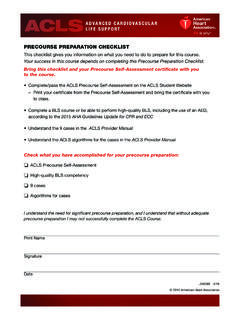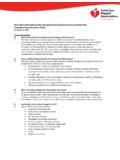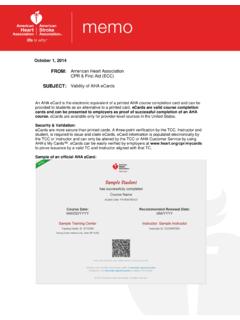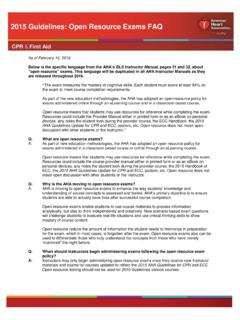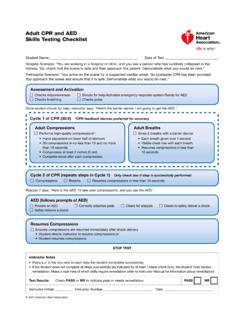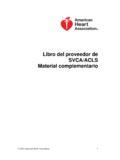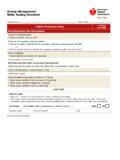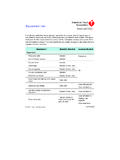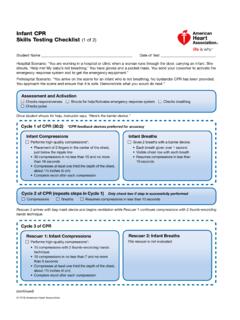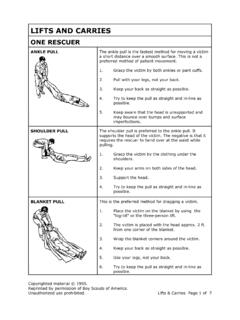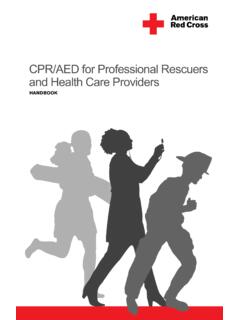Transcription of Summary of High-Quality CPR Components for BLS Providers
1 Summary of High-Quality CPR. Components for BLS Providers Infants Adults and Children Component (age less than 1 year, adolescents (age 1 year to puberty). excluding newborns). Verifying scene safety Make sure the environment is safe for rescuers and victim Recognizing cardiac arrest Check for responsiveness No breathing or only gasping (ie, no normal breathing). No definite pulse felt within 10 seconds (Breathing and pulse check can be performed simultaneously in less than 10 seconds). Activating emergency If a mobile device is available, phone emergency services (9-1-1).
2 Response system If you are alone with no Witnessed collapse mobile phone, leave Follow steps for adults and adolescents on the left the victim to activate the Unwitnessed collapse emergency response Give 2 minutes of CPR. system and get the AED. Leave the victim to activate the emergency response system before beginning CPR. and get the AED. Otherwise, send Return to the child or infant and resume CPR;. someone and begin CPR. use the AED as soon as it is available immediately; use the AED. as soon as it is available compression -ventilation 1 or 2 rescuers 1 rescuer ratio without advanced 30:2 30:2.
3 Airway 2 or more rescuers 15:2. compression -ventilation Continuous compressions Continuous compressions at a rate of 100-120/min ratio with advanced airway at a rate of 100-120/min Give 1 breath every 2-3 seconds (20-30 breaths/min). Give 1 breath every 6 seconds (10 breaths/min). compression rate 100-120/min compression depth At least 2 inches (5 cm)* At least one third AP At least one third AP. diameter of chest diameter of chest Approximately 2 inches (5 cm) Approximately 1 inches (4 cm). Hand placement 2 hands on the 2 hands or 1 hand 1 rescuer lower half of the (optional for very 2 fingers or 2 thumbs in the breastbone (sternum) small child) on the center of the chest, just lower half of the below the nipple line breastbone (sternum) 2 or more rescuers 2 thumb encircling hands in the center of the chest, just below the nipple line If the rescuer is unable to achieve the recommended depth, it may be reasonable to use the heel of one hand Chest recoil Allow complete recoil of chest after each compression .
4 Do not lean on the chest after each compression Minimizing interruptions Limit interruptions in chest compressions to less than 10 seconds with a CCF goal of 80%. * compression depth should be no more than inches (6 cm). Abbreviations: AED, automated external defibrillator; AP, anteroposterior; CCF, chest compression fraction;. CPR, cardiopulmonary resuscitation. 2020 American Heart Associatio
